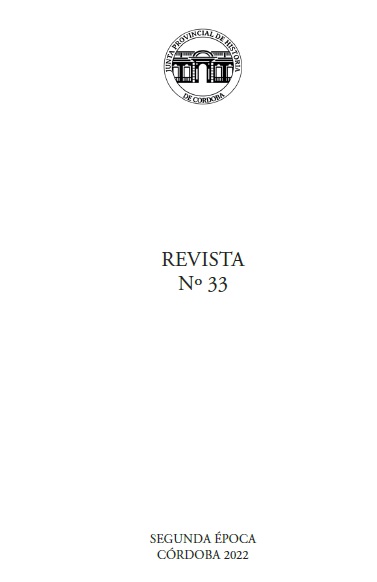Town and Country Homes at the Beginning of the Independent Age.
Main Article Content
Abstract
Since the National Census of 1813, carried out at times of the struggles for independence, did not consider the structure of the household, the present work addresses the analysis of its characteristics in the Capital city and in a rural area (Río Segundo), exploring whether the particular socio-political situation affected them differently. The por census data were expanded through various sources. Castes and many slaves predominated in the city, while whites were more frequent in the rural area. In both areas, women and the high percentage of widows prevailed - much more in the city. Both in the city and in the country the predominant households were of complex structure, although the city showed a high percentage of single-person households. Those with a free chief,mainly housed people of pardo-mestizo condition, while households with Spanish chief were made up of whites and slaves. In rural areas, the effect of the “levas” and wars had less intensity, since there were a more balanced sexual proportion, a higher number of people per household, more frequency of married people, fewer widows and a higher proportion of children. Multiple examples are given of the different types of households.
Article Details
How to Cite
References
• ARCONDO, Aníbal, La población de Córdoba en 1813,
Universidad Nacional de Córdoba, Fac. deCiencias Económicas,
Córdoba, 1995
• BALMORI, Diana,“A course in Latin American Family History”,
The History Teacher 3, 1981, pp. 376-391.
• BURCH, Thomas. “Household and Family Demography: A
Bibliographic Essay”. Population Index, Vol. 45, No. 2, 1979.pp.173-195.
CACOPARDO, María Cristina,“Jefas de hogar de ayer y de hoy
en la Argentina”,Papers de demografia, Nº. 150, 1999, pp.1-10.
• COLANTONIO, Sonia (ed.),Población y Sociedad en tiempos
de lucha por la emancipación. Córdoba, CIECS (CONICETUNC),
2013.
• COLANTONIO, Sonia, FERREYRA, Maria del Carmen.
“Los grandes grupos de co-residencia en la ciudad de Córdoba
según el censo de 1813”, enMónica Ghirardi (coord.), Familias
iberoamericanas de ayer y de hoy. Una mirada interdisciplinaria.
Asociación Latinoamericana de Población, Serie Investigaciones,
Nro.2, 2008, pp.309-332.
• LASLETT, Peter, “Las historia de la familia”, en Pilar
GONZALBO (comp.), Historia de la familia, México, Instituto
Mora, Universidad Autónoma de México, 1993, pp.43-68.
• SAMARA, Enide Mesquita (org.), Trabalho feminino e cidadania.
São Paulo. São Paulo. Humanitas, 2000, p 99.
• SZUCHMAN, Mark. Order, family and community in Buenos
Aires 1810-1860, Stanford University Press, 1988.
• VALDANO, Silvia, CARBONARI, María R,. COCILOVO,
José. La población de 1813 en la Región del Río Cuarto (Córdoba,
Argentina), Río Cuarto, Fundación Universidad Nacional de Río
Cuarto, 1999.
• WOOD, Charles. “Equilibrium and Historical-Structural
Perspectives on Migration, International Migration Review,
1982.V.16 (2), pp. 298-319.
